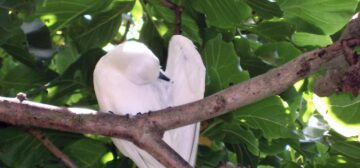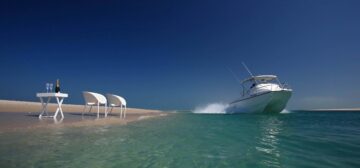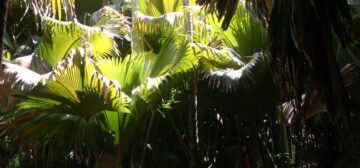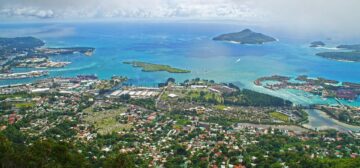Seychelles
The Indian Ocean is the third largest body of water on Earth, and in these warm seas you will find some of the most idyllic islands in the World. Before planning your ideal Seychelles holiday, learn a bit about the history and traditions of this beautiful Tropical Paradise.
Read More
General Information
Seychelles, with an estimated population of 86,525, has the smallest population of any African state. Austronesian seafarers or Arab traders were the first to visit the uninhabited Seychelles. The earliest recorded sighting by Europeans took place in 1502 by the Portuguese Admiral Vasco da Gama.The Seychelles were used as a transit point for trade between Africa and Asia, and also occasionally by pirates until the French began to take control starting in 1756. The islands were named after Jean Moreau de Séchelles, Louis XV’s Minister of Finance.
Geography – Environment
Seychelles is an isolated archipelago of outstanding natural beauty comprising 115 islands. 35 islands of the “Inner Islands Group” are granitic, rocky and hilly with narrow coastal strips. The other islands are coral and flat with elevated reefs. The islands lie in the western part of the Indian Ocean, north of Madagascar and 1,593 km (995 miles) east of Mombasa, Kenya. They are between 4 and 5 degrees south of the equator at a longitude between 55 and 56 degrees east.
The granite islands support luxuriant tropical forest on the mountain slopes. The coral islands are also densely covered with vegetation more characteristic of sandy coral soils. Tree species include the coconut palm, casuarina, banyans, screw pines and tortoise trees. The giant “coco de mer” palm, is indigenous to the Seychelles and lives for up to 1,000 years. The jellyfish tree, having only eight surviving examples left, is another rarity only found in the Seychelles. Of about 200 plant species, 80 are indigenous, including the “bois rouge”, the giant “bois de fer” and the “capucin.”
Fruit bats, flying foxes, geckos and skinks are common and there are more than 3,000 species of insect. The giant tortoise (which appears on the Seychelles coat of arms) survived near-extinction; there are now over a hundred thousand on Aldabra Island. There are many species of rare bird, such as the bare-legged scops owl, Seychelles kestrel, black parrot, magpie, robin and paradise flycatcher.
With almost 50% of its limited landmass set aside as national parks and reserves, Seychelles prides itself on its record for far-sighted conservation policies that have resulted in an enviable degree of protection for the environment and the varied ecosystems it supports. Four islands of the archipelago are bird sanctuaries, including Bird Island, which is inhabited by millions of fairy terns.
Seychelles is also home to two U.N.E.S.C.O World Heritage Sites: Aldabra, the world’s largest raised coral atoll and Praslin’s Vallée de Mai, once believed to be the original site of the Garden of Eden.
The Ministry of Environment & Natural Resources has been mandated with the important task of protecting all species in all of their states, whether they are threatened, vulnerable or on the brink of extinction. Current projects are underway to conserve and protect some of the rarest species found on the islands. These include the Seychelles Black Parrot, Scops Owl, Sheath-Tailed Bat and the Hawksbill turtle.
History, Culture and Politics
It is very likely that the Seychelles – as we know them today – were first spotted by Arab traders as long as 1000 years ago. Their location would make them an ideal provisioning stop for early seafaring peoples like the Arabs, Phoenicians and Indonesians. Almost 500 years ago Vasco de Gama, the Portuguese explorer/navigator, is credited with the official discovery. Part of the island, group, the Amirantes (islands of the Admiral) is named in his honour. A Portuguese map of 1544 shows the islands as the Seven Sisters; Petite Soeur and Grande Soeur retain these names today.
The British landed there in 1609 on an expedition for the East India Company. For the next 133 years the islands became a provisioning base for the merchant navy, as well as for plundering Indian Ocean pirates and buccaneers. To this day there are still stories of fabulous treasures hidden on Mahe!
The French expedition led by Lazare Picault to Mahe in 1742 gave Baie Lazare its name and in 1756 the islands were formally claimed on behalf of Louis XV of France. The Stone of Possession, now in the national museum, was laid and the islands were officially named in honour of Jean Moreau de Sechelles, French Minister of Finance. French colonisation and agricultural settlement of the fertile soil and favourable climate continued uninterrupted until the end of the century.
During the Napoleonic War period Seychelles were regarded as a strategic acquisition as the British fought to contain French expansion. The French were forced to give up the islands, yet without a permanently stationed British force, control changed seven times in 13 years. The 1814 Treaty of Paris confirmed British rule.
Throughout the 19th century the population increased as Seychelles first produced high quality cotton, then harvested whales from local waters, and finally began the large coconut plantations which became the economy’s mainstay. Plantation labour was drawn from former slaves freed in 1835 when the institution was abolished. By the end of the century export of guano improved the island economy and in 1903 Seychelles became a separate Crown Colony. Seychelles achieved independence from Britain in 1976 and became a republic within the Commonwealth.
The cosmopolitan Seychellois are a colourful blend of peoples of different races, cultures and religions. At different times in its history, people of African, European and Asian origin have come to Seychelles, bringing with them their distinct traditions and customs and contributing to the way of life and to the vibrant Seychellois culture.
With many Seychellois being descendants of Africans, who were brought here by slave-traders in the late eighteenth and early nineteenth centuries, strong elements of mainland African tradition can be distinguished in the culture. Other Seychellois, who voluntarily settled in these islands, also brought with them a varied cultural background. The abject poverty suffered by the slaves and the constant struggles by the settlers led to a mutual effort to improve their lives. The linkage provided fertile ground for the creation and development of a unique Seychellois heritage and culture.
One can see these influences at work throughout the domains of local art, cuisine, music, dance and architecture. The architectural design of some of the grand old houses with their steep roofs are representative of a style adapted for comfortable living in the tropics that displays influences from Seychelles, French and British colonial heritage.
Modern architecture attempts to assimilate traditional styles with practical features designed to capture the island breezes. Local artists continue to exhibit diverse styles that echo the multi-ethnic backdrop of the islands and bear testament to the wide variety of influences. Creole music and dance have their roots in African, Malagasy and European cultures with rhythms traditionally accompanied by simple drums and string instruments which, today, include such recent imports as the violin and guitar. The traditional moutya is an erotic dance derived from the days of slavery and still features today, together with the sega with its colourful lyrics; the kanmtole, reminiscent of a country reel, and the Kontredanse, an import from the French court.
The Republic of Seychelles has a multi-party political system with an executive President as head of state and government. The President heads a Cabinet of 10 ministers which includes the Vice-President. The new Seychelles flag was introduced on June 18, 1996 (National Day). The five oblique bands of colour represent a dynamic young country moving into a new future. The blue depicts the sky and the sea that surrounds the Seychelles. Yellow is for the sun which gives light and life, red symbolises the people and their determination to work for the future in unity and love, whilst the white band represents social justice and harmony. The green depicts the land and natural environment.
Language
Creole, English and French are spoken widely. Any of these will suffice at the major hotels, attractions, shops, banks, etc. Some members of the travel industry speak German and Italian. Translation services are available.
Health & Malaria
Although the Seychelles are close to the equator there is no malaria, yellow fever, cholera or many other tropical diseases. Those who have travelled to or through any affected area (including Kenya) before coming to Seychelles are required to certification of yellow fever vaccination. There is a possibility of rabies in certain parts of the country (although there have been no reported cases since 1994); visitors should consult with their physician about vaccination. Although other vaccinations and preparations are generally unnecessary, visitors are advised to consult with their local Health Department.
Victoria Hospital on Mahe is the main health facility. All doctors speak English and/or French. There are several other clinics on Mahe and on Praslin and La Digue. Visitors can get medical and dental treatment, for which there may be a charge according to the service provided. There are also small hospitals on Praslin and La Digue but all patients in need of immediate medical attention are taken to Victoria. Private Doctors are available and may be arranged through hotels.
Some hotels also have a small nursing staff on duty at certain times. There are several pharmacies in Victoria, Mahe including Central Pharmacy at Victoria Hospital. On other islands, local government clinics are used.
Because of the remote nature of Seychelles, and the even more remote location of most of the islands, we strongly recommend all visitors obtain Travel Insurance which includes Emergency Evacuation coverage. Evacuation (even to the hospital at Victoria) in the event of illness or injury is expensive and will not be provided unless a means of payment is obtained in advance.
Water
The public water supply is chlorinated and normally safe. However, as it is different it may cause mild gastrointestinal upset. Because the tap water is chlorinated, visitors may prefer to drink bottled water but there is no imperative to avoid soft drinks, alcoholic drinks and ice.
Climate
Seychelles’ enviable climate is always warm and without extremes. In this tropical haven the temperature seldom drops below 24°C or rises above 32°C. All but the remotest southern islands lie comfortably outside the cyclone belt making Seychelles a year-round destination for sun worshippers and beach lovers. During the north-west trade winds that visit between the months of October and March, the sea is generally calm and the weather warm and humid, with average winds of 8-12 knots. In January and February the islands receive their life-giving rains, rejuvenating the rivers and streams and teasing the vibrant foliage into rainbows of colour. The months between May and September bring drier, cooler weather, and livelier seas – particularly on south-eastern coasts – and winds of 10-20 knots.
Depending on the planned activities during your visit to Seychelles we recommend the following as the best times to visit:
- Scuba divers will find April, May, October and November have the highest visibility and calmest seas although conditions are excellent year round.
- Anglers will find that the southeast trade winds: from May to September are better for Big Game though the seas can sometimes be rough; from November to February the northwest trade winds bring calmer seas for bottom fishing. October and April are perhaps the most enjoyable with calm seas.
- For birdwatchers, April heralds the new breeding season and Bird Island will be found to be overrun with seabirds from May through September; migration periods are from September to December.
- Hiking and walking is best from May to September because of the dry conditions, lower temperatures and lower humidity.
Clothing
Light clothes are advisable because of the tropical climate. For women, light cotton dresses, slacks and shorts and pareos/ sarongs for the day and a long skirt or cool dress for evenings. Men will be most comfortable in light weight trousers and shorts, and open neck shirts. For business, safari suits are acceptable and ties are not usually worn except to church. Sandals or light canvas shoes are adequate. Swimwear is not worn except on the beaches.
Currency
The unit of currency is the Seychelles Rupee (SR) which is divided into 100 cents. Banks and most hotels will exchange currency. Several banks are located outside the arrivals area at the International Airport and are open to meet all incoming and departing flights. There are no restrictions on the import or export of foreign currency. A maximum of 1000 Seychelles rupees may be exported.
Foreign currency and rupees can be freely exchanged at hotels and banks. Rupees cannot be used by visitors for business transactions such as car rental, restaurants, and excursions; all such must be paid for in hard currency such as dollars, pounds, and euro. We recommend exchanging a moderate amount of money at the airport upon arrival.
Visa and MasterCard are widely accepted except in some of the smaller lodging establishments. American Express, Diners Club and several other minor cards are accepted in fewer places.
Visa Requirements
Everyone travelling to the Seychelles must have a passport valid for at least 6 months beyond the end of travel. Visas are not required but a Visitors Permit, valid for 4 weeks, is issued upon arrival at the airport. Travellers must have a return (or onward) air ticket, pre-booked accommodations and sufficient money for their stay. The Permit may be renewed for 3 months at no cost and for 3 additional 3 month periods at a fee of 200 Seychelles rupees.
Please note that this information is valid at the time of going to press, but visitors are encouraged to double check on the latest travel requirements themselves in case of any recent change.








